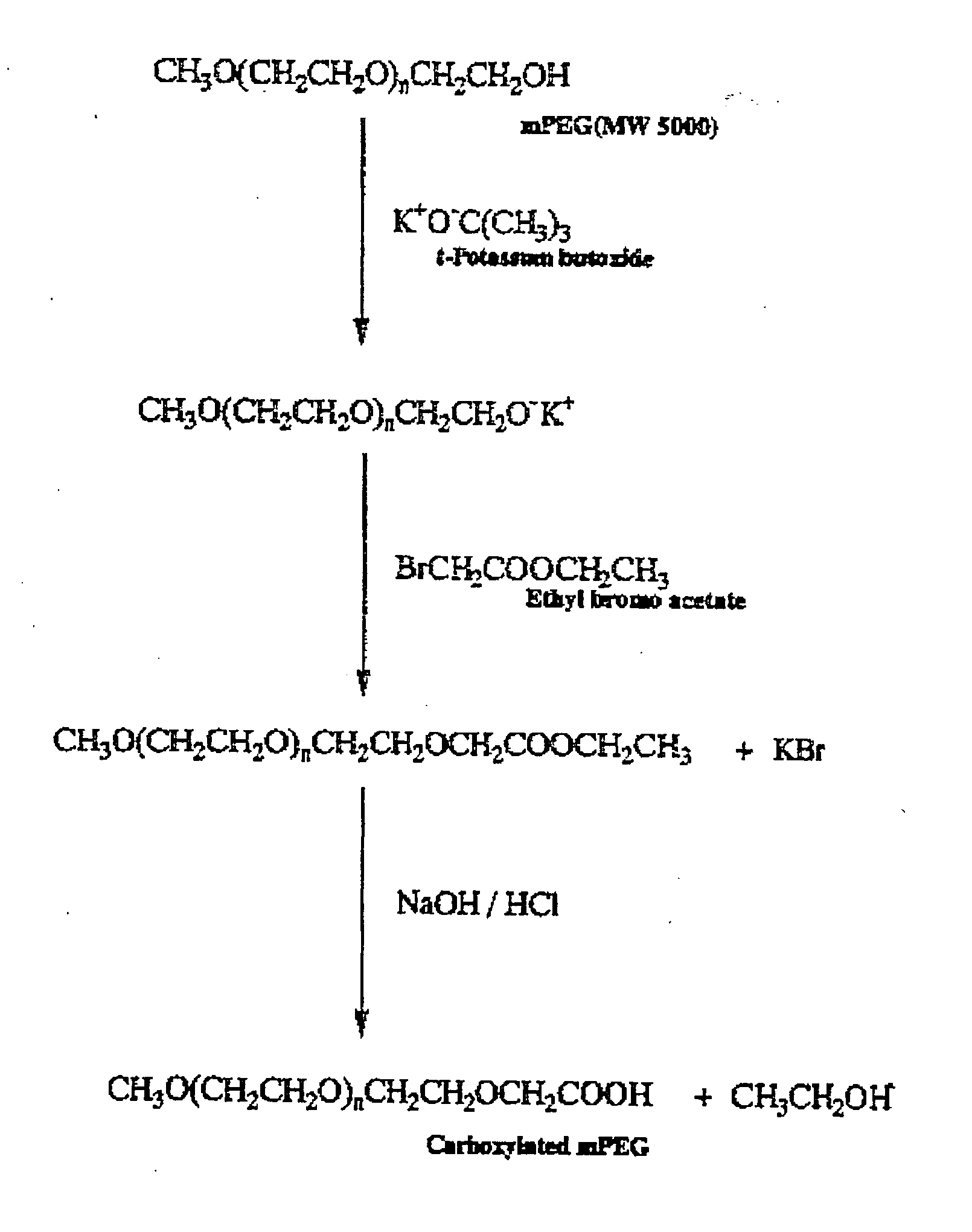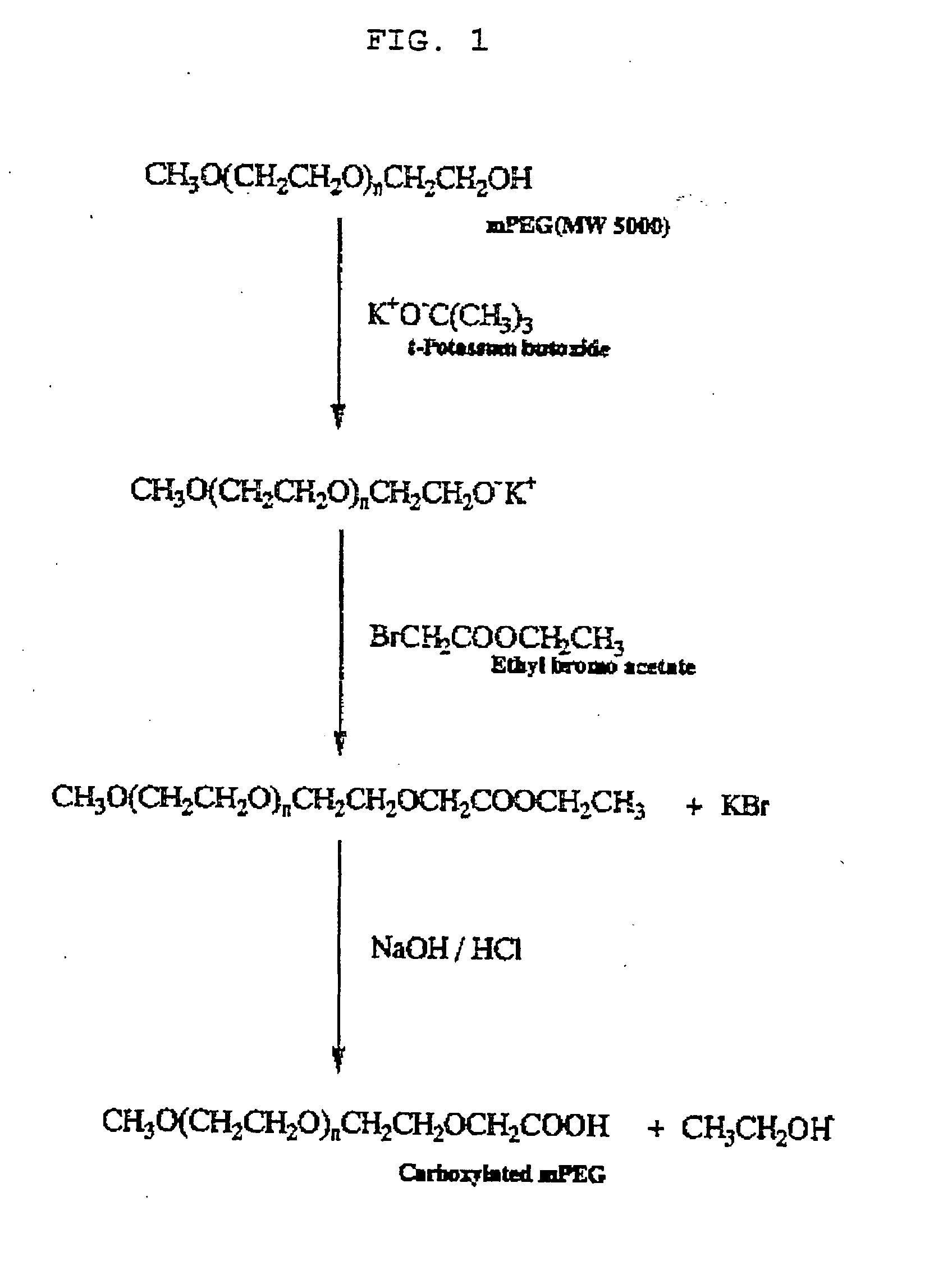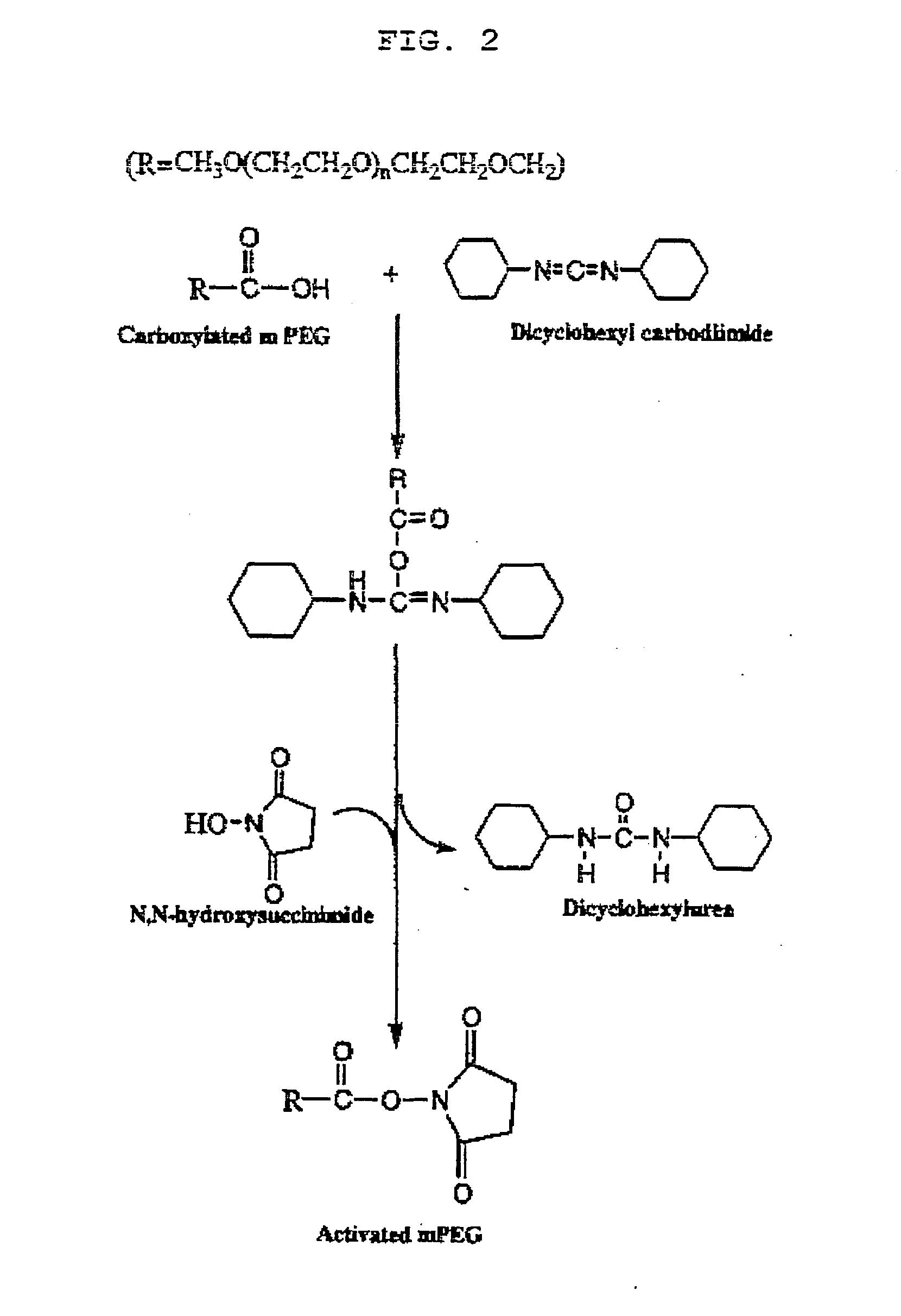Surface modification of islet membranes by polymeric grafting methods
a technology of islet membrane and surface modification, which is applied in the field of surface modification of pancreatic islet membrane, can solve the problems of inability to fully understand the exact mechanism of the malfunction of insulin secretion, the destruction of the pancreatic islet within 2 weeks, and the inability to obtain it, so as to prevent the destruction of the islet membrane and increase the efficiency and life time
- Summary
- Abstract
- Description
- Claims
- Application Information
AI Technical Summary
Benefits of technology
Problems solved by technology
Method used
Image
Examples
example 1
PEG Grafting on Pancreatic Islet Membrane
Carboxylation Step of mPEG
[0086] 45 g of mPEG-5000 was solved with 500 ml water in 3-neck flask and added with toluene anhydrous. While keeping the temperature at 120° C., pure Ar was continuously circulated. mPEG and toluene mixed solution was broiled and condensation had been occurred. As phase separation was seen, unclear water was removed and the temperature was lowered to room temperature. Potassium butoxide was added to the above mixed solution and the mixture was reacted at 70° C. for 24 hours. After that, the temperature was lowered to room temperature again and ethyl-3-bromopropionate was added and let the mixture react at room temperature for one day. The mixture was filtered to remove potassium bromide (KBr) and precipitated by adding ether. The precipitated mixture was then stored at freezer for 2 or 3 hours and filtered again and finally dried. Dried PEG was mixed with 200 to 300 ml of 1 M NaOH and stirred for 2 hours. 2 hours...
example 2
mPEG Grafting onto the Pancreatic Islet Membrane by Repetitive PEGylation
[0091] On the basis of the result of the above , proper PEGylation time was decided 1 hour and PEGylation was performed once a day repeatedly for 3 days. The morphological change of pancreatic islet membrane was observed with electron microscopy according to each reaction time while PEGylation was performed repeatedly and the density of PEG grafted on the surface of pancreatic islet was confirmed to be increased by repetitive PEGylation of FITC-PEG on the surface of pancreatic islet.
[0092] As seen in FIGS. 5a and 5d, repetitive PEGylation did not change the shape of pancreatic islet. It was also confirmed through the observation of confocal scanning image of pancreatic islet onto which PEGylation was performed repeatedly that PEG was clearly grafted onto the pancreatic islet membrane. In addition, the more PEGylation repeated, the higher the density of PEG grafted onto the pancreatic islet membrane went (FIG....
example 3
Grafting of mPEGs Having Different Molecular Weights onto Pancreatic Islet Membrane by Repetitive PEGylation
[0093] In order to graft various mPEGs having different molecular weights onto pancreatic islet membrane, the present inventors have performed PEGylation repeatedly once a day for 3 days, just like the above . At first, separated pancreatic islet obtained in washed twice with HBSS buffer solution and 15 ml HBSS in which 23 mg of activated PEG was dissolved was added, followed by 1 hour reaction in incubator. And then, the above solution washed twice with RPMI-1640 culture medium and cultured for one day adding the same culture medium. On the second day, the pancreatic islet washed twice with HBSS buffer solution and 15 ml of HBSS in which 23 mg of activated PEG having 2000 molecular weight was dissolved was added thereto for 1 hour reaction in the incubator. The pancreatic islet washed twice again with RPMI-1640 culture medium and added with the same medium for culture there...
PUM
| Property | Measurement | Unit |
|---|---|---|
| molecular weight | aaaaa | aaaaa |
| distance | aaaaa | aaaaa |
| volume | aaaaa | aaaaa |
Abstract
Description
Claims
Application Information
 Login to View More
Login to View More - R&D
- Intellectual Property
- Life Sciences
- Materials
- Tech Scout
- Unparalleled Data Quality
- Higher Quality Content
- 60% Fewer Hallucinations
Browse by: Latest US Patents, China's latest patents, Technical Efficacy Thesaurus, Application Domain, Technology Topic, Popular Technical Reports.
© 2025 PatSnap. All rights reserved.Legal|Privacy policy|Modern Slavery Act Transparency Statement|Sitemap|About US| Contact US: help@patsnap.com



